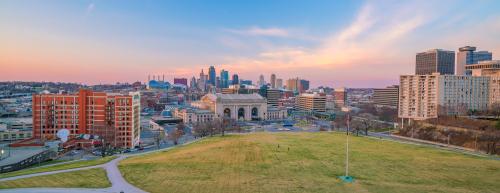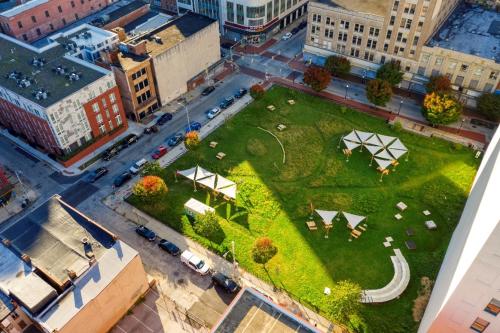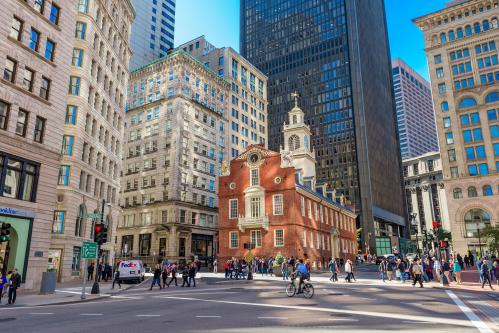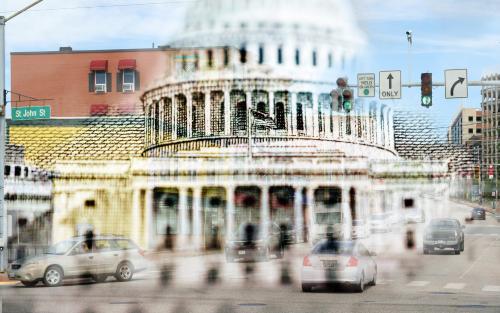Placemaking Postcards is a blog series from the Bass Center for Transformative Placemaking at Brookings where policymakers and practitioners guest-author promising placemaking efforts from across the U.S. and abroad that foster connected, vibrant, and inclusive communities. In line with the principle tenets of placemaking, the goal of the series is to recognize the community as the expert, highlight voices from the field, and to create a community of learning and practice around transformative placemaking.
 As a young Black girl growing up in Washington, D.C. and Silver Spring, Md., I was exposed to several kinds of neighborhoods. Some were racially integrated, some were predominantly Black, and others were predominantly white. As a child, I understood there was something different about each of these places, and importantly, how I should navigate them. Like many children of color, my life was shaped by the contingencies of place: where I was born, the schools I could attend, and the opportunities in the neighborhoods where I grew up. Looking back, I see how easily my life could have taken a different path.
As a young Black girl growing up in Washington, D.C. and Silver Spring, Md., I was exposed to several kinds of neighborhoods. Some were racially integrated, some were predominantly Black, and others were predominantly white. As a child, I understood there was something different about each of these places, and importantly, how I should navigate them. Like many children of color, my life was shaped by the contingencies of place: where I was born, the schools I could attend, and the opportunities in the neighborhoods where I grew up. Looking back, I see how easily my life could have taken a different path.
In America, neighborhoods determine destiny. But unjust, racist policies and actions have created segregated and distressed neighborhoods. To revitalize these places, we must recognize how race—not family income, family structure, education level, or accumulated wealth—functions as the main determinant of life outcomes. And we must directly address racism through tangible, equity-focused action at the neighborhood level.
The organization I’m a part of, Purpose Built Communities, is striving to do just that, and learning along the way. We are a national nonprofit that supports a network of local groups leading holistic revitalization efforts in 28 neighborhoods in 24 cities across the country. Grounded in sociological, economic, and legal research, our model is a comprehensive revitalization approach that includes concurrent investments in mixed-income housing, high-quality cradle-to-college education resources, and health and wellness services and infrastructure such as clinics and parks.
As community developers, the question for us is: How can we nurture places so that they offer more opportunities for Black Americans and other people of color, so that everyone can access the ability to earn, learn, and live a safe and healthy life?
A framework to catalyze racial equity within our model
Almost all the neighborhoods we work in are Black and brown, and some have large immigrant populations. Using a racial equity lens to approach this work is vital, and it requires continuous, intentional effort.
In 2016, we partnered with Race Forward to center racial equity within our model. Together, we have been using a framework of “normalize, organize, operationalize” to catalyze racial equity. Here are some lessons we’ve learned along the way:
- Organizing around racial equity: To encourage local partners to organize for racial equity in their work, we asked network leaders to apply to be part of a new “Racial Equity Ambassador” program designed to deepen their knowledge (and the network’s) of our work’s racial justice impacts. Over a two-year period, the first cohort of seven leaders helped us design the program, identify pathways for open and honest dialogue among network members, develop a racial equity statement, and commit to specific projects to advance racial equity as part of their work.
In Atlanta, for instance, one of our Racial Equity Ambassadors and the president and CEO of the East Lake Foundation posed a challenge to his board of directors to start using Black-owned banks and financial institutions to hold and manage their organization’s finances. The board overwhelmingly agreed, and the East Lake Foundation has since committed to using a racial equity lens across all facets of its work. This includes coming together in summer 2020 with the Grove Park Foundation and Focused Community Strategies to match a $2 million grant from the Harlem Children’s Zone to support COVID-19 relief and recovery efforts in Black neighborhoods.
A second cohort of Racial Equity Ambassadors convened in 2020, which means that more than half of the leaders in our network are on this intentional journey, sharing insights with one another in a community of practice that is, ultimately, impacting the entire network to more meaningfully center race and equity.
- Operationalizing racial equity: Drawing from my own experience, I was able to access a quality education because I had parents with the means and the will to drive me long distances to high-quality schools. I recognize my privilege in that regard. But one of the many ways we can enhance racial equity in Black and brown neighborhoods is to support good schools in those neighborhoods so economically disadvantaged families don’t have to resort to extraordinary measures for their children to receive a good education. Another way is to provide families with direct economic assistance.
Several of our network members are operationalizing racial equity through direct support to Black families. In Wilmington, Del., REACH Riverside raised private funds to provide $500,000 in direct cash assistance ($1,250 per family) to residents of the Riverside neighborhood—a predominantly Black community impacted by white flight, disinvestment, and the compounding vulnerabilities COVID-19 has laid bare. In Grand Rapids, Mich., Amplify GR’s Neighborhood Strong program is providing vulnerable homeowners with grants for essential repairs to help make up for disparities in homeownership.
Efforts such as these can help break cycles of poverty perpetuated by policies that limited access to homeownership and wealth-building for Black community members. They can also help people live comfortably and safely in their homes, and when they choose to sell, they can do so with strong market value. Over time, these efforts bolster the entire neighborhood.
To achieve success, expand the dialogue about racial equity
To get to the root of poverty in our cities, we all must work with the same set of facts. For some, that means learning parts of our history for the first time, including how Black and brown neighborhoods were subject to systematic disinvestment and disenfranchisement. Overwhelming evidence makes it clear that the cumulative harm of systemic racism has trapped generations of people of color in segregated neighborhoods of concentrated poverty.
While no single organization can root out poverty alone, normalizing conversations about race is essential to any effort to end poverty, and moving from dialogue to actual change is long overdue. Place-based organizations are uniquely situated to build racial equity in neighborhoods over the short and long term. As such, the leaders and partners in our network are using their positions to better educate funders, government, and community members on why racial equity is important and one of the main outcomes we strive for.
As a girl, I wasn’t aware of terms like “racial equity” and “systemic racism.” But I still understood the lengths my parents went to care for me, educate me, and prepare me for my future. I also saw how too many other Black children did not have access to the same opportunities. With a focus on racial equity, we can provide those opportunities for the next generation.
Cover photo courtesy of Focused Community Strategies: Joel Barber is at the Carver Neighborhood Market in historic South Atlanta. The market serves a community in a former food desert.






Commentary
How a national network of local leaders is centering racial equity in neighborhood revitalization
March 2, 2021